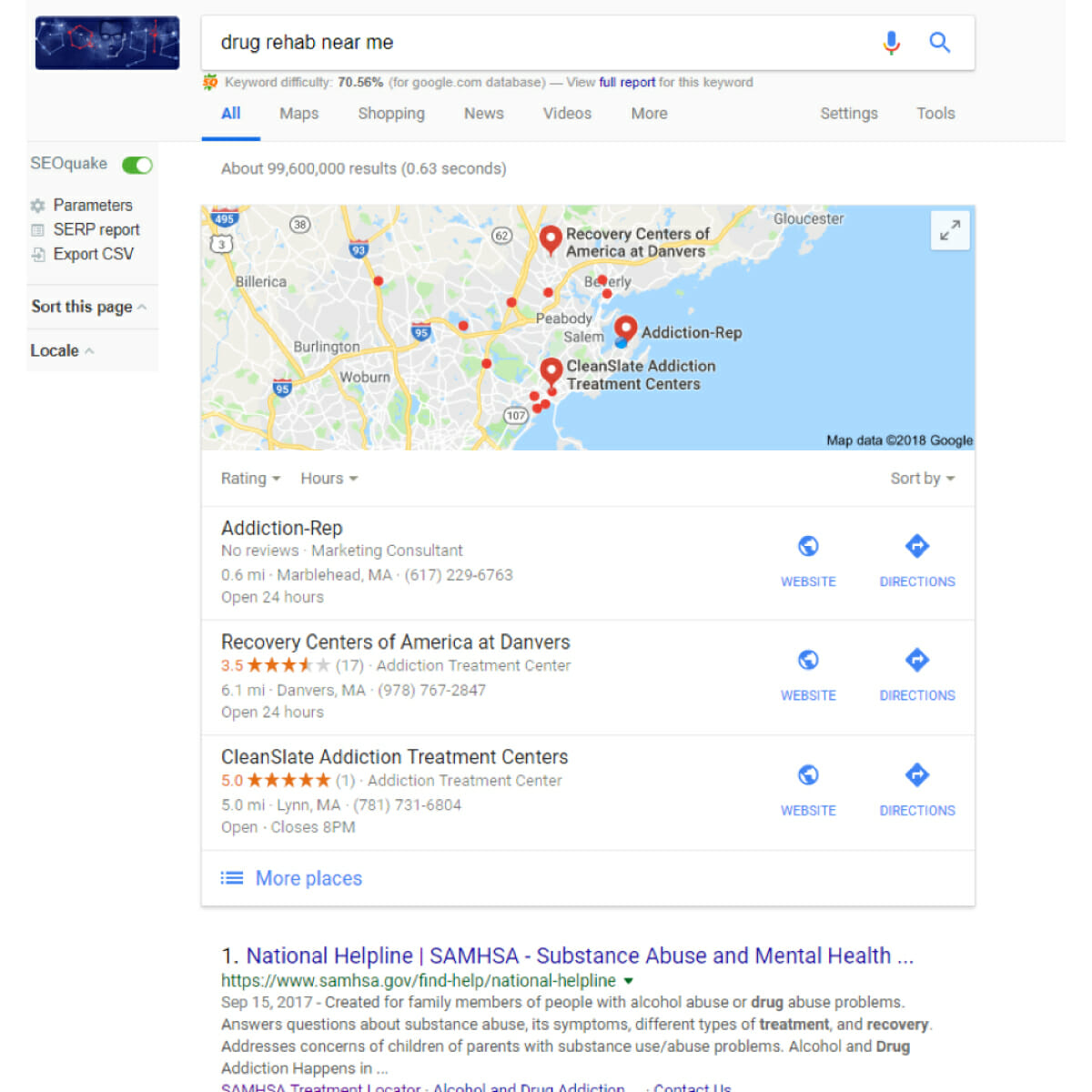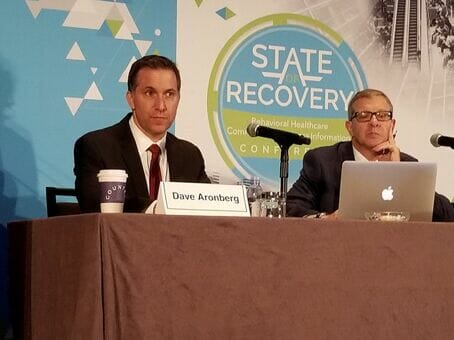Patient Brokering in the Addiction Treatment Industry
Co-Authored by Jim Peake and Christian Morris
When beginning our research for this article, we typed “what is patient brokering?” into Google search. The first page of results were all articles about patient brokering in the addiction treatment industry. We wondered why! Why is this such a big issue in the recovery space and why aren’t other medical fields having similar issues?
What is Patient Brokering?
Patient brokering is when a drug rehab or similar facility pays a third party for bringing a patient to their establishment. The patient believes they are being referred by a responsible party who has their best interest at heart, but patient brokers and the addiction treatment centers that use them are primarily focused on their finances.
Why Does This Problem Exist in the Rehab Industry?
Families and patients are often in a vulnerable situation, they are most likely navigating uncharted waters when it comes to finding suitable treatment. They are also likely to be feeling an urgency to find the solution quickly.
On the other side of the equation, many rehabs are undercapitalized and some are run by greedy operators. An undercapitalized rehab can’t compete with more affluent organizations when it comes to marketing the “right way” – because the right way takes time and costs money. It’s not easy to build a solid brand, acquire and train a caring sale team, design and develop a proper website and marketing message in order to legitimately generate leads and referrals online.
Before the recent changes to the Google PPC policy for the addiction treatment industry, Google was allowing anyone and everyone to bid on treatment related keywords and land up top in the Google search results for these terms. This became an easy way for treatment centers and lead referral sources to gain a ton of online visibility, credible or not. And, only those with real budgets could stay up top. A paid search campaign could easily cost between $5,000 and $12,000 (or more!) to admit one new patient.
Google recently updated its policy for drug rehabs and Adwords by allowing each rehab to be vetted by third-party player, LegitScript. This is a positive development that will hopefully eliminate the third-party marketing and lead-generation companies who have been misusing AdWords.
However, all of the Google changes are going to take time. So, in the meantime, in an effort to fill their empty beds, some rehabs will resort to using a patient broker. The broker can solicit anywhere between $500 and $7,000 per patient for admission into a drug rehab facility. This cost can appear to be a bargain for some of the rehabs. If they are being reimbursed by the insurance companies $25,000 to $30,000 per patient, per month, the broker fee can be perceived as “the cost of doing business.”
The Effort to Curb Patient Brokering
Florida is leading the charge in cracking down on patient brokers. Here is the link to the statutes in the sunshine state.
“It is unlawful for any person, including any health care provider or health care facility, to:
(a) Offer or pay a commission, benefit, bonus, rebate, kickback, or bribe, directly or indirectly, in cash or in kind, or engage in any split-fee arrangement, in any form whatsoever, to induce the referral of a patient or patronage to or from a health care provider or health care facility.”
How Is Patient Brokering Done?
When a person visits a patient broker’s website, the site can access and capture personal information that the third party is likely unaware is available to them. The website may be using technology that the everyday web consumer typically does not know exists. The viewer can be misled to believe they are calling a “treatment center” that is shown on the website, but that specific treatment center may be nonexistent.
The likely reality is that they have just contacted a well-organized call center. The representatives are friendly, compassionate and very sympathetic; they might tell the caller that they too are in recovery and this program saved their life at some point. These are skilled salespeople, trained to react to emotions, ask key questions and check boxes on their screen to close the deal efficiently.
They might ask for insurance information to run a verification of benefits (VOB) that might qualify the caller for their program via the caller’s insurance provider. They may then ask for more information for a “medical assessment,” stating that “safety is first and foremost our primary objective.” This is another tactic to find out how desperate the caller is and to collect financial information about them and their family.
Insurance card information will provide them with all they need to calculate approximately how much a policy will pay a facility per day and how many days the insurer will authorize coverage for.
If someone is admitted to a facility via a patient broker site, they may not end up at the place that was presented on the website. You may see pictures of palm trees as in the photo above, but this is actually an image from a hotel, not a rehab.
Taking It One Malicious Step Further
Patient brokering is illegal, and while the “selling” of patients may be unconscionable, there is another type of patient brokering that is much darker: There are unscrupulous people who will hang around a sober living home waiting for a newly released patient to relapse (perhaps even encouraging them to relapse). Then, they can “sell” the relapsed patient into a nearby facility to collect another “commission.” There are scores of stories where this has happened.
How Can Someone Avoid Being ‘Brokered’?
Research!
Most people seeking help are vulnerable and desperate, so patient brokers will build a website that is designed to gain trust. Step one is to try to avoid a patient broker website. Patient broker websites target two populations: treatment centers and the families.
To target the treatment centers, patient broker sites will state that they will provide VOB (verification of benefits) patients, meaning patients who have verified insurance. It can look something like this:
When targeting patients or their families, the site may say something along these lines:
It would be nice to believe that someone built this website as a free community service and that they are not making any money from it. The reality is that they are likely making money somewhere in the addiction treatment stream.
How to Tell If It’s a Real Treatment Center
Sometimes it is really hard to determine which website is a patient broker site and which is not. A rehab may have its license displayed on their site; it should also have its staff listed in the “About Us” section and state each person’s position and credentials.
If there are no names there, then that could be a red flag. If there are names, a quick Google search with the word “FRAUD” after the business’s name can bring any issues to light. You can also look up company names on LinkedIn.
Look at the site’s Privacy Policy. Look at the Terms of Service. Do a Google search for the name of the rehab + reviews. Look at the testimonials. If the company’s name is not registered with the state in which it claims to be located, that could be a sign that it is a broker.
There is a high concentration of patient brokers in Florida and California, where most of the rehabs are located. To see who is behind a business in the state of Florida visit Sunbiz. A search of the name of the company on the secretary of state’s site in the state of the rehab location should yield results for a legitimate rehab facility. Check Delaware and Nevada, as well, since some companies register there for business reasons rather than the state of the location.
Make a call to the state’s licensing office to ask if this is a real program and if the rehab is registered with and certified by the health department. Ask the licensing office if it has any information to share about the treatment provider.
Important Notes
The patient broker’s call center staff will ask many of the same “intake” questions as a legitimate rehab would. The difference is that the rehab is verifying insurance information for admittance to treatment while the broker is ascertaining the patient’s “worth” for placing in a rehab.
A rehab center should be HIPAA compliant with private patient information kept confidential and safe. In contrast, patient brokers are not regulated!
The Criminal Element
In 2017, law enforcement (especially in Florida) put significant pressure on patient brokering, and there have been fewer visible cases so far in 2018. This could be attributed to a successful crackdown, or it could be because of lack of budget.
Even the “governing bodies” of the addiction treatment space have had individuals corrupted by the large amounts of money available to brokers, according to this article in the Palm Beach Post. Organizations and addiction treatment associations like FARR and NAATP have tried to monitor ethical marketing but with limited success, due to complexities in technical know-how.
Each state has its own laws regarding patient brokering. Florida law does not allow anyone to receive a commission for referring people to a health care provider, and some sober living operators have been arrested for patient brokering.
And according to the South Bend Tribune:
“Two laws, the Americans with Disabilities Act and the Fair Housing Act, make it practically impossible to regulate, or even count, sober homes. Since the enactment in 2008 of The Parity Act and the Affordable Care Act, more young adults are covered under their parents’ insurance plans, behavioral health is now covered, and people cannot be denied coverage for pre-existing conditions, such as past detox and treatment.”
Who Is to Blame for Patient Brokering?
The insurance industry is partly to blame. When insurance reimburses a provider for 28 days of inpatient treatment, it is really not enough time for an addict to become clean and sober. Ideally, they would spend 90 to 120 days or more in an inpatient environment. There is pressure on the 12-step holistic treatment centers to demonstrate better outcomes, and they are having difficulty producing them.
However, on the MAT (medically assisted treatment) side of the business, these rehabs have been able to produce better outcomes using Suboxone, methadone and Vivitrol regimens. We expect to see significant growth in the MAT addiction treatment model in the coming years.
Some blame Google. Sure, they might be doing something about it now (Exclusive: Google unveils vetting process for drug rehab ads). But, one might argue too little too late. For years now Google has been profiting from addiction treatment ads and it wasn’t until recently they seemed to care at all about WHO was doing the bidding.
How Can It Be Stopped?
Law enforcement and penalties! The biggest problem is the lack of prosecution of those arrested for these offenses. Prosecutions cost money, and different states have different budget allocations and different priorities.
Addiction treatment patient brokering has become such a big problem that Florida State Attorney Dave Aronberg has testified before Congress to lay out the problem before the lawmakers. Aronberg frequently speaks to the press and at addiction treatment conferences about his office’s role in enforcing the current laws. Aronberg is one of the most visible leaders in the U.S. regarding the law in relation to the addiction treatment space.
The biggest problem with patient brokering is that the patient’s needs take a back seat to the actual treatment they are sent to (highlighted in this expose by NBC in June 2017). Incentives such as free airplane tickets, free rent, free cigarettes and free food are components that make up what Aronberg calls the “Florida shuffle.”
Basically, the Florida shuffle goes something like this:
1. A patient is recruited from a northeastern state for 30-day admit to a Florida rehab.
2. The patient then moves to a sober living facility.
3. The patient eventually relapses.
4. And then, the patient gets admitted to another Florida rehab facility.
It is not uncommon for some patients to cycle through a half-dozen to a dozen treatment centers. The rehab industry has created a business model that rewards the rehab and the patient brokers for patients’ relapses.
So Why Are Other Medical Fields Not Having Similar Issues?
The biggest reason other medical sectors do not have this problem could be because they do not have as much potential for repeat customers. And, as a rule, they will not recruit new patients from former patients.
In most cases, once a surgery or procedure is performed, it does not have to be redone; it is fixed. You will most likely not see heart surgery patients recruiting other heart surgery candidates for triple and quadruple bypass procedures.
Many addicts are in close contact with other addicts in their community. Addicts and their families tend to trust former addicts whom they have witnessed coming clean and who say that they too can become clean. To the unscrupulous, this “referral system” provides plenty of opportunity for exploitation.








